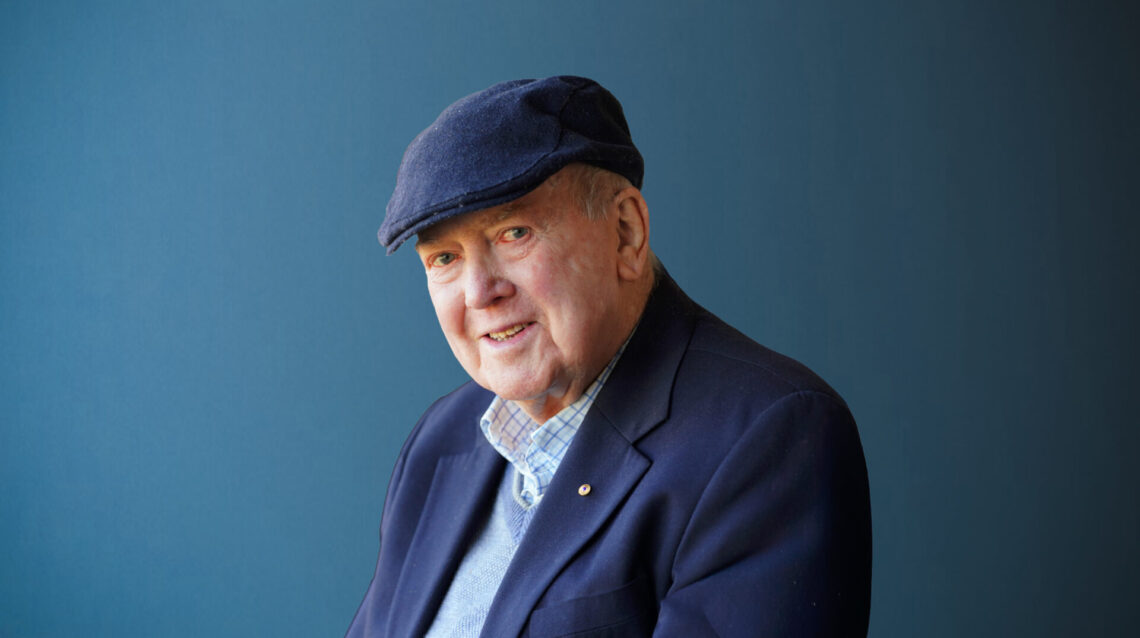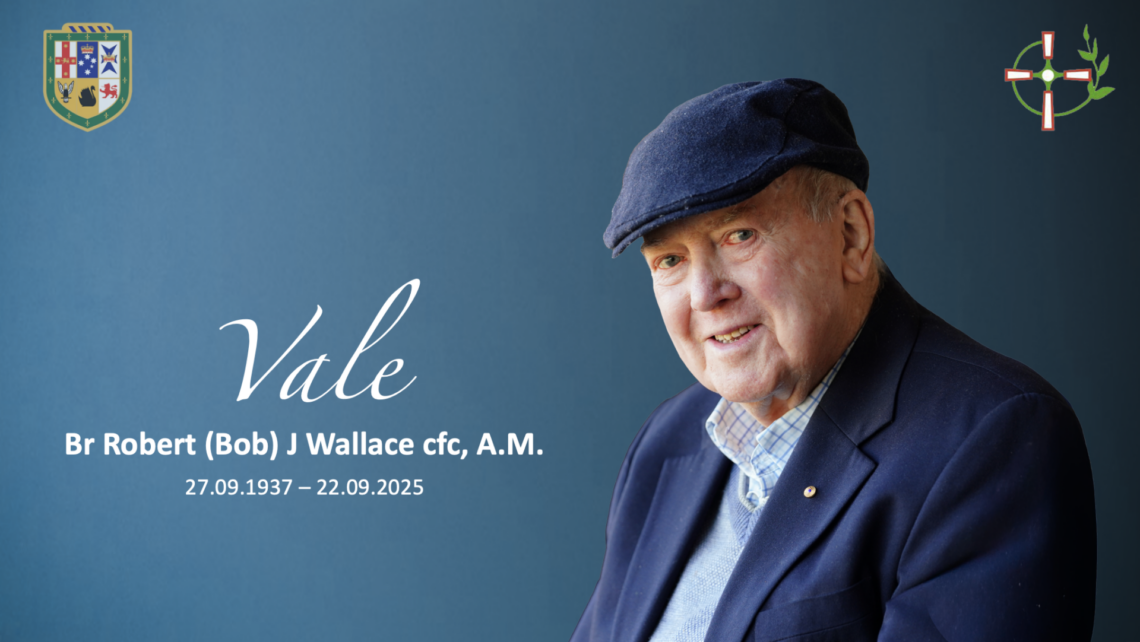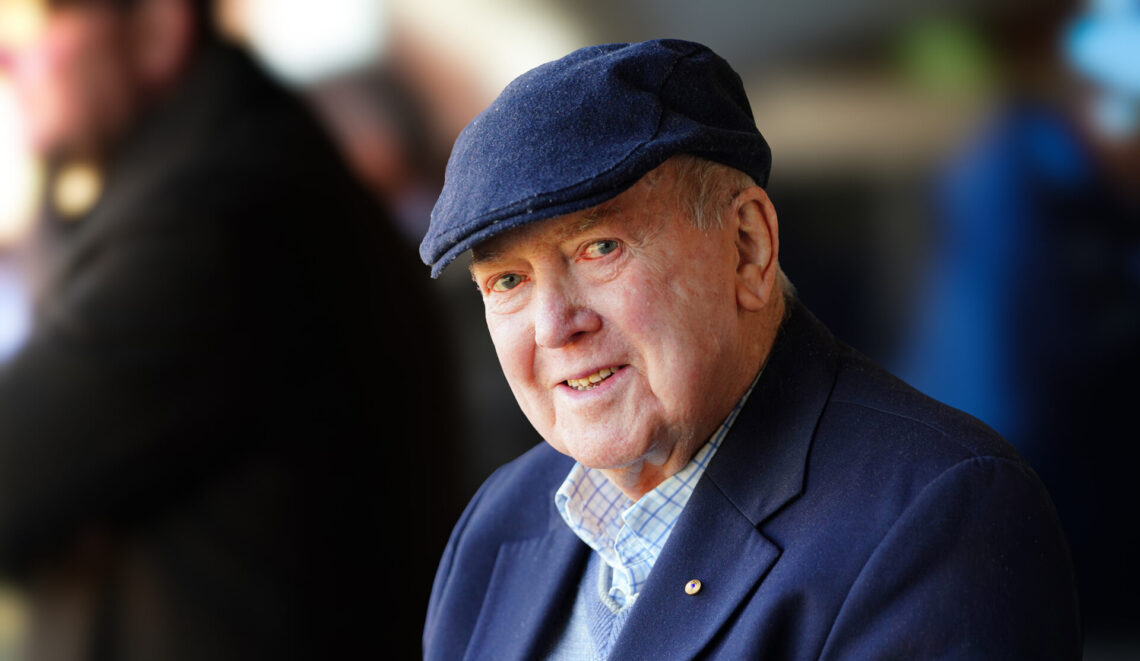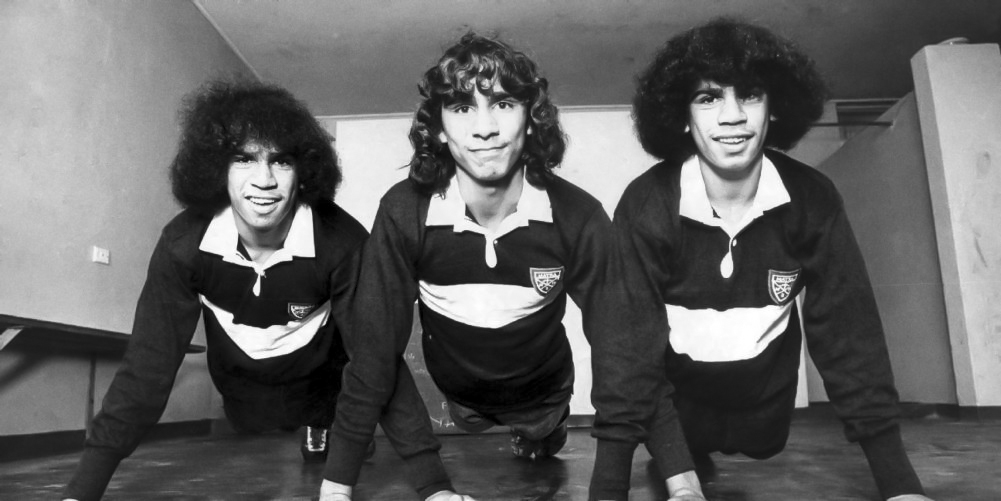
By Greg Growden for ESPN Rugby 5 April 2017
Amidst the gloom that is currently Australian Rugby has thankfully come a rejuvenating moment where we can happily reminisce about when those in the national colours were not the laughing stock of the 15-man game, but the envy of the international rugby world.
A few days ago, a group of middle-aged men- some showing off the benefits of a lush life but many still taut, trim and terrific- assembled in Sydney for an important sporting reunion, marking the 40th anniversary of the celebrated 1977-78 Australian Schoolboys team that finished a 16-match tour of Japan and Europe unbeaten.
It wasn’t the fact that they defeated everyone- including Ireland, Wales and England- that put them on the highest pedestal. It was the way they played that really made them special. Taking many hints from the adventurous, creative playing theories of A.C ‘Johnnie’ Wallace, Cyril Towers and Wally Meagher who made the 1927-28 Waratahs such a vibrant, memorable brand, the 1977-78 schoolboys, coached by Geoff Mould, pushed the ethos that running rugby was winning rugby.
Their mode of attack was based around a flat attacking alignment, that the ball had to be run from every opportunity, players had to pursue tries, forwards and backs were interchangeable in open play, and kicking had to be kept to a minimum. Mould told players if they unnecessarily kicked they would be dropped. That even included field goal attempts. It worked. They scored 110 tries- an average of just under seven per match. And they only let in six tries for a 555/97 for and against points record.
Most importantly this team gave a critical kiss of life to Australian Rugby at a time when it was chronically ill. The Australian Rugby Union were unable to stage any Test matches in 1977 as it was on the brink of insolvency. The ARU could not afford an inbound tour, or allow the Wallabies to travel anywhere. Not for the first time in the ARU’s chequered history, the money had dried up.
But these schoolboys succeeded in reviving interest in the Australian game, as evidenced when the team returned to Sydney. The only story on the front-page of the Sydney Daily Telegraph on January 26, 1978 was about them. Under a headline ‘The Invincibles… Schoolboys fly in triumphant’ was a large photograph of the three Ella brothers- Mark, Glen and Gary, all boasting big, beaming smiles. Glen, wearing an England jersey, was giving the ‘thumbs up’ to the camera.
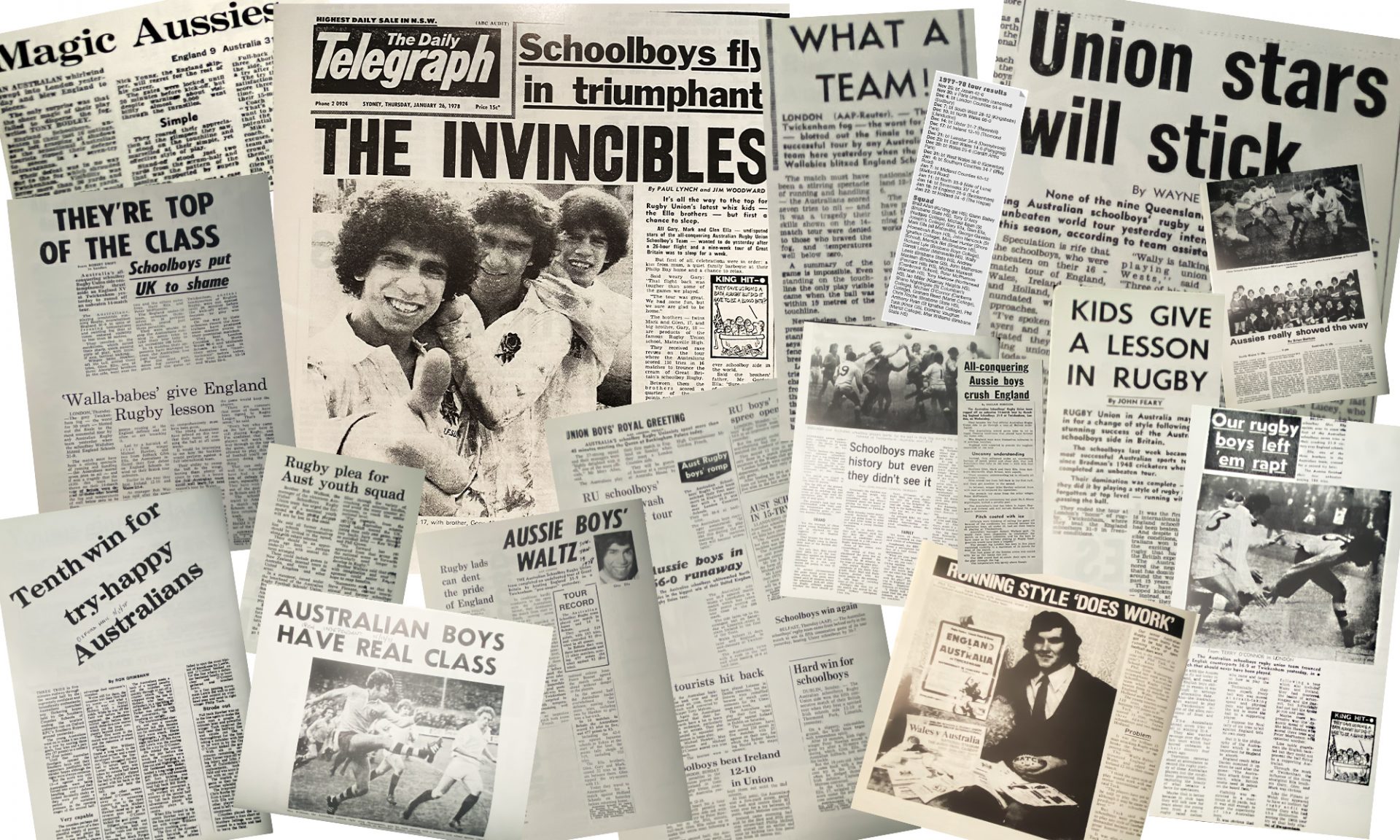
When the Ellas bought the Telegraph, they were deeply disappointed when they couldn’t find any mention of them in the sports-pages. They believed what they had done deserved at least some sort of mention. It was only when their mother May told them to turn to the front page that they realised what they had achieved was significant.
And from these ranks emerged ten Wallabies- the Ellas, Michael O’Connor, Tony Melrose, Michael Hawker, Chris Roche, Tony D’Arcy, Shane Nightingale and Dominic Vaughan.
Wally Lewis, who struggled to make the schoolboy’s first XV on tour, instead made the international rugby league arena his. Some reasonable young footy players also missed out on making that trip- including Steve Cutler, Lloyd Walker and the now England coach Eddie Jones.
This Australian team, captained by Melrose who later had both a successful rugby and league career, succeeded where so many others have failed by winning over the Fleet Street press. During the tour, the British newspapers tried to out-do each other in coming up with ballet metaphors to describe the grace of the Australian Schoolboys running game.
The often caustic but always perceptive London Daily Telegraph rugby correspondent, John Reason wrote: “The Australians play a style of football which has certainly not been seen in this country since the war, if ever.”
“They make overlaps from close quarters as naturally as they breathe, and undoubtedly the stars of the team are the three Ella brothers- Glen, Gary and Mark.
“They are absolute magic as handlers and runners. Their impromptu work at close quarters, both in the use of the ball and in working round opponents was something completely beyond the experience of the England boys, who have grown up in a very much more orthodox game.”
Terry O’Connor, the experienced Daily Mail rugby writer started one news report under the headline of “Aussies just run and run” with: “A group of Australian schoolboys have been shaking the foundations of British rugby for the past five weeks…. The Australian boys approach is simple- run and pass at speed with unlimited support.”
For many years, whenever either Reason and O’Connor sighted this writer at Test venues all over the world they would bring up that Australian Schoolboys tour, explain how exceptional they were and how they had been charmed by Ella stardust. And these two wily scribes were hard to impress.
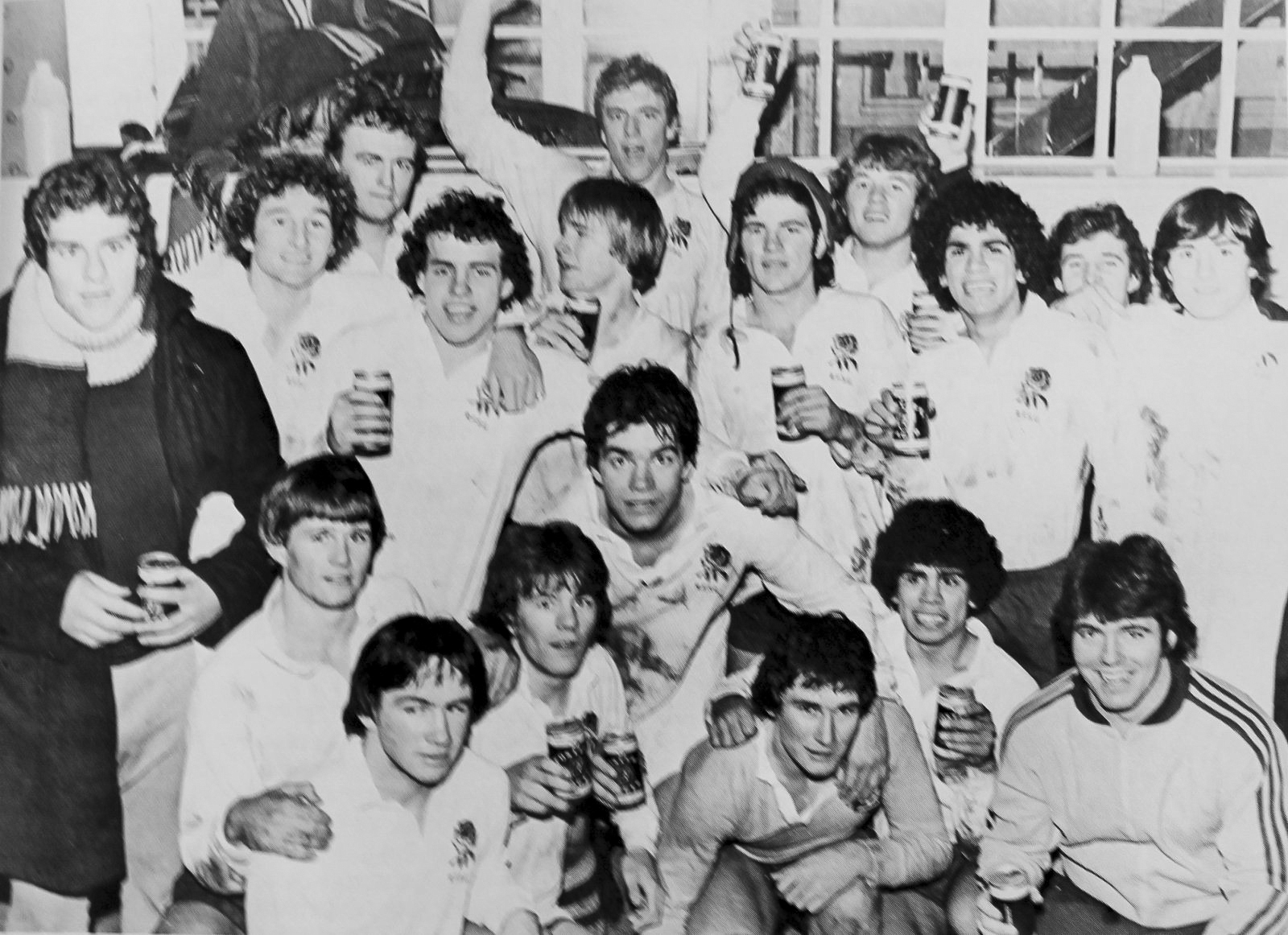
“Was this Australia’s greatest rugby team? You can very easily argue that it is- not just because of their exceptional record, but more importantly that how they performed had such a major impact on the local game.” Greg Growden
“We played a different style of football and had a lot of fun. Even after 40 years the camaraderie within this group is still very strong. We all have such fond memories of a great time in our lives, and of what we achieved.” Ella said.
The ‘fun’ moments included when against North Wales in Llandudno, with Australia leading 18-0 at half-time, Mould decided to rest Glen Ella. But Glen wanted to stay on the field. When the coach wasn’t looking, Glen swapped jumpers with his twin Mark. Mark came off, and Glen played No 10 for the rest of the game. Mould didn’t realise he had been duped until well after the match was over, and the Australian players were celebrating a 66-0 shellacking.
There were also countless off-field highlights, including a visit to Buckingham Palace, where one of the players Peter McPherson couldn’t resist the chance to ask the Queen of Prince Charles’ then heavily publicised romances.
The winger asked the Queen: “Is it true what they say about Charlie and the girls?”
The Queen smiled and moved on. She wasn’t perturbed though, with the planned half-hour meeting with the side instead extended to more than 90 minutes.
Was this Australia’s greatest rugby team? You can very easily argue that it is- not just because of their exceptional record, but more importantly that how they performed had such a major impact on the local game.
It also convinced many that the adventurous way the Australian Schoolboys played was the right way for the senior game should be played- with the Ella magic making the Randwick Galloping Greens the team to watch in the late 1970s and 80s- invigorating all with their expansive flat-line attack approach. It unshackled rugby, luring so many newcomers to the code. Suddenly rugby was again compelling viewing.
The 1977-78 Australian Schoolboys must be rated right up there with the 1947-48 Wallabies who didn’t have their try-line crossed during the four Home Union Tests, the 1949 Wallabies who won the Bledisloe Cup on New Zealand soil, the triumphant 1984 Grand Slam side, the 1986 Bledisloe Cup victors and the 1991 and 1999 World Cup winners as the best this country has put on a rugby paddock.
There will never be another schoolboys team like it.
end item
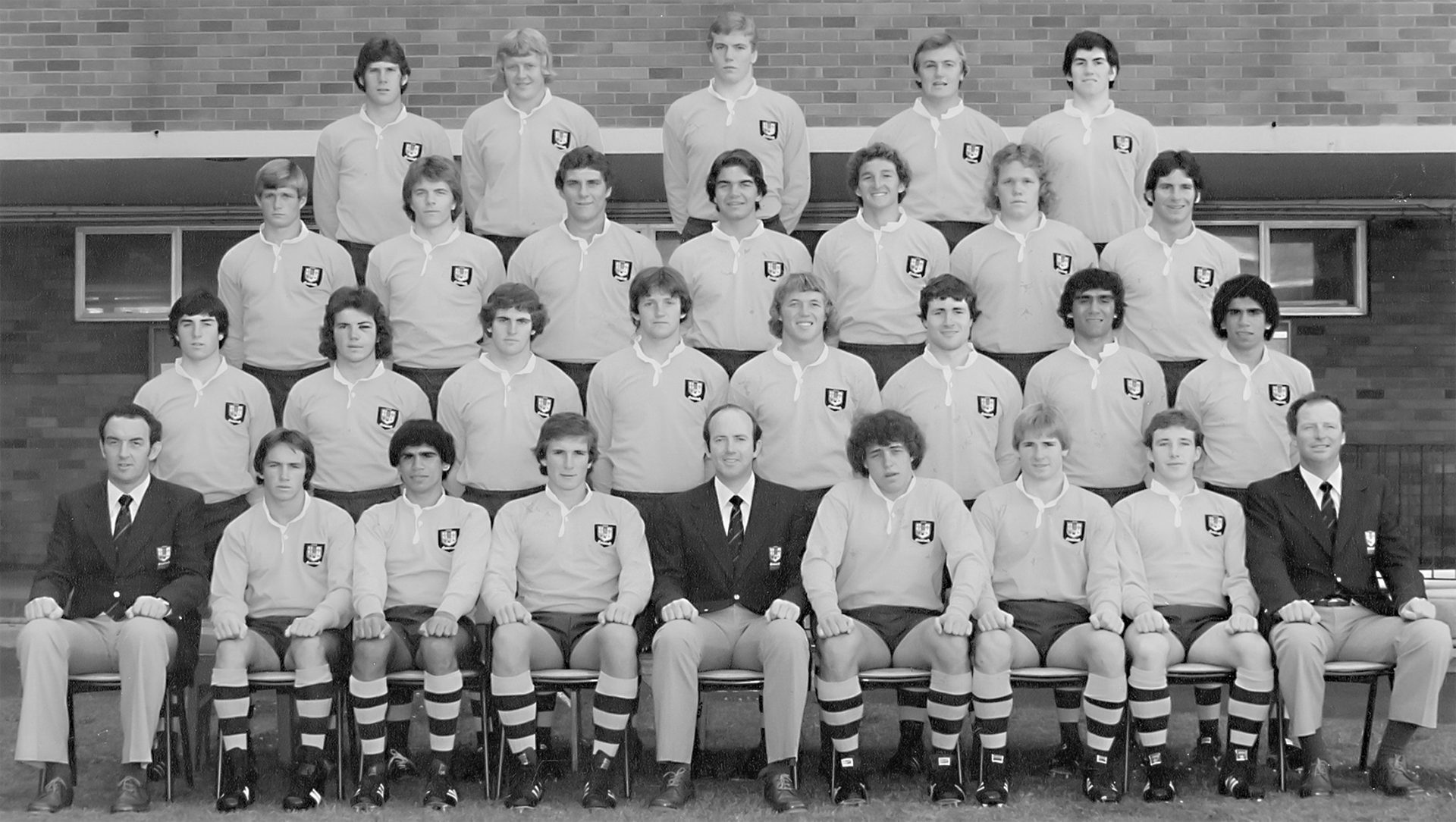
1977 Australian Schoolboys Team
Back Row: Max Williams (QLD), Shane Nightingale (QLD), Michael Maxwell (NSW), WARICK Melrose (NSW), Phillip Tuck (NSW)
Third Row: Michael Hawker (NSW), Ian Miller (NSW), George Gavalas (NSW), Richard Leslie (QLD), Glenn Bailey (QLD), Tony D’Arcy (QLD), Andrew Maclean (QLD)
Second Row: Michael Egan (NSW), Chis Roche (NSW), Michael O’Connor (ACT), Graham Reed (ACT), Wally Lewis (QLD), Brad Allan (NSW), Gary Ella (NSW), Glen Ella (NSW)
FRONT ROW: Mr Jim Lucey (Assistant Manager), Dominic Vaughan (NSW), Mark Ella (NSW), Tony Melrose (NSW, Captain), Mr Bob Wallace (Manager), Peter McPherson (NSW), Merrick ILETT (QLD), Tony Ryan (NSW) Mr Geoff Mould (Coach, Assistant Manager)
(Absent: John Hancock (NSW), D. Lester (NSW), J Matheson (NSW)
COURTESY ESPN RUGBY: https://www.espn.com.au/rugby/story/_/id/19081121/how-1977-78-australian-schoolboys-side-rejuvenated-aussie-rugby
